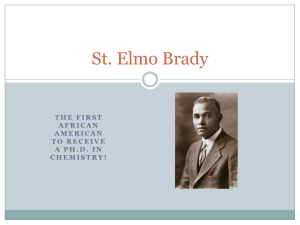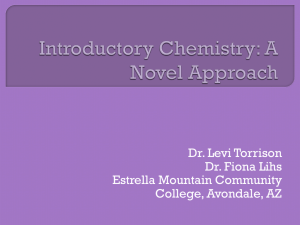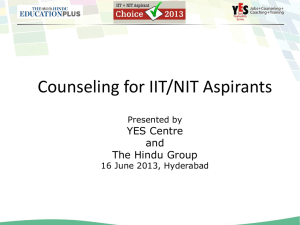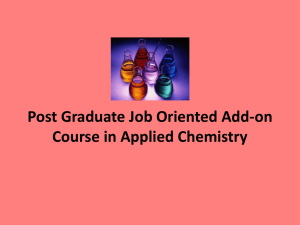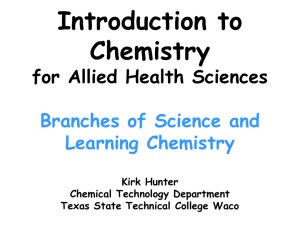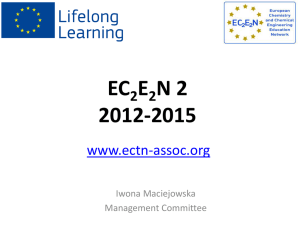Chemistry for Allied Health and Nursing Students: An
advertisement
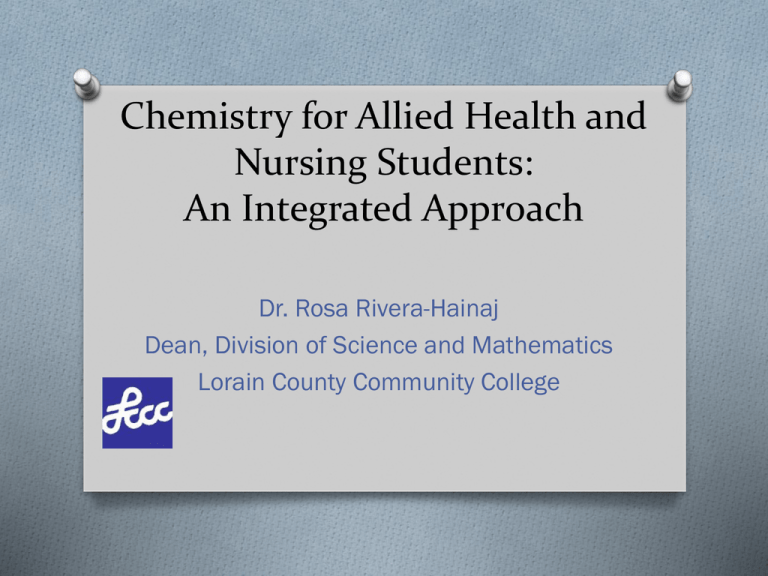
Chemistry for Allied Health and Nursing Students: An Integrated Approach Dr. Rosa Rivera-Hainaj Dean, Division of Science and Mathematics Lorain County Community College Status of the Chemistry classroom (or STEM classroom, for that matter) O Lecture is still the predominant form of instruction in the science classrooms. O Seymour and Hewett (1997) have shown, poor teaching practices in college STEM courses appear to lie at the heart of some of these problematic trends.* *Linking Evidence and Promising Practices in Science, Technology, Engineering, and Mathematics (STEM) Undergraduate Education . A Status Report for The National Academies National Research Council Board of Science Education by James Fairweather, Michigan State University. O This instructor-centered approach is opposite to the student-centered instruction being promoted by many stakeholders, including Achieving the Dream and Completion By Design programs. O There are many innovations used in the classroom by innovative faculty: white board, ELMO, text messages, clickers, LMS, etc. O However, most efforts are focused on the use of lecture material ONLY, without contextualization. What can be done to help students understand and use Chemistry and be successful in the course? O The key word is INTEGRATION! O Several universities and community colleges have taken the approach of integrating the lecture and laboratory in the general chemistry course (Duke University and Maricopa Community College, to name two). O Although the concept may not be new, it does take thinking outside the box with regards to teaching space and course scheduling. At Lorain County Community College… O Allied Health and Nursing students must take Chemistry 161, the first part of the General, Organic and Biochemistry (GOB) course sequence. This course is General Chemistry. O Some students, especially those working towards the BSN, will then have to complete the GOB sequence. Problem: O Chemistry 161 is considered one of the gatekeeper courses at LCCC, hindering student progress and credential completion. What has been done? O At the moment we have four platforms for course delivery: O In person – traditional O Online O Blended O In person – integrated O The availability of diverse teaching platforms for our GOB course has increased the success of our students. O Faculty plays a fundamental role in the success of students, and being open to explore different modalities of teaching is a major aspect of the project. O Planning for diversity in teaching is not easy, it must also account for the reality that individuals do not all learn in the same way, and any group of students will include a variety of approaches to learning. How can I re-design my course to become an integrated one? O A few things need to be determined before making any major changes: O Learning space selection – lab space with “lecture” capability OR classroom space with “laboratory” capability O Course schedule – a non-traditional time block would be needed. Gone are the lectures 3X (or 2X) a week and once a week lab 2-3 hours long. O Faculty selection – faculty needs to be able to engage students and be able to make the necessary transitions from lecture to hands-on exercises. Course Material Re-Design O We will work now through the re-design of one chapter of the course. O Topic: Chemistry, Matter and Measurement O Associate Lab: Solids and Liquids Density; Specific Gravity; Lung Volume O The goal is to combine these discussion topic and the associate lab into a continuum, allowing students to apply learned/presented concepts right away. Subtopics O What is chemistry? O Scientific Method – hands-on activity O Classification of Matter O States of matter experiment – phase changes O Measurements O Measurements and Health Careers O Significant Figures – Math Review O SI units O Dimensional Analysis – Density, temperature Let’s get to work! Round the room… Closing Remarks and Next Steps Dr. Rosa E. Rivera-Hainaj Dean, Division of Science and Mathematics Lorain County Community College 440-366-7280 rhainaj@lorainccc.edu www.lorainccc.edu





